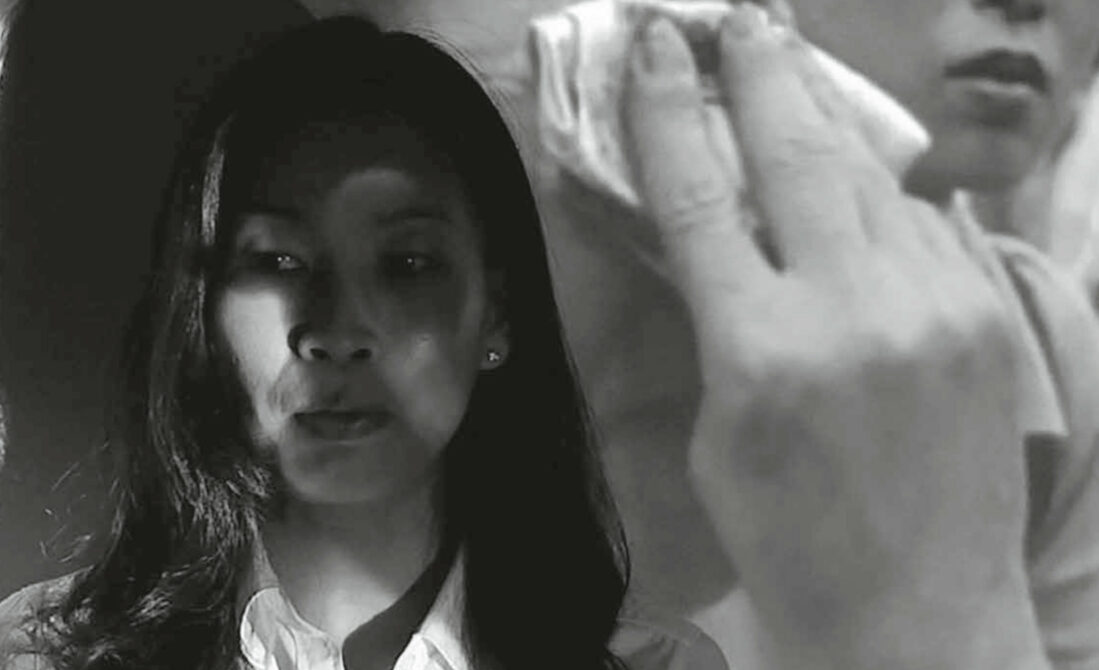COMMUNITY OF PARTING with Jane Jin Kaisen in person

Community of Parting will be screened as a single-channel film followed by an artist Q&A and discussion.
The Johns Hopkins University Critical Responses to Anti-Asian Violence (CRAAV) Initiative has partnered with the Center for Advanced Media Studies to bring internationally-renowned artist Jane Jin Kaisen as artist-in-residence to Baltimore and feature her multi-media artwork at the SNF Parkway Theatre.
Experience Kaisen’s installed artworks, Apertures/Specters/Rifts (2016) and Strange Meetings (2017) and reserve seats to screenings of two of her films,The Woman, The Orphan, and The Tiger, (2010) and Community of Parting (2019) as part of the Asia North Arts Festival 2022.
Community of Parting traces a different approach to borders, translation, and aesthetic mediation by invoking the ancient shamanic myth of the Abandoned Princess Bari and engaging female Korean shamanism as an ethics and aesthetics of memory and mutual recognition across time and space.
Rooted in oral storytelling and embodied by female shamans, the myth about Bari and her abandonment at birth for being born a girl has been mainly understood as a story of filial piety. However, Kaisen frames the myth as an initial story of gender transgression that transcends division logics but has the experience of othering and loss at its core. According to the myth, Bari regains the community’s acceptance after reviving the dead and is offered half the Kingdom. Yet, the heroine refuses to abide by human borders and chooses instead to become the goddess who mediates at the threshold of the living and the dead.
Community of Parting derives from Kaisen’s extensive research into Korean shamanism since 2011 and her long-term engagement with communities effected by war and division. The piece is composed of imagery filmed in locations such as Jeju Island, the DMZ, South Korea, North Korea, Kazakhstan, Japan, China, the United States, and Germany. Combining shamanic ritual performances, nature -and cityscapes, archival material, aerial imagery, poetry, voiceover, and soundscapes, the piece is configured as a multi-scalar, non-linear, and layered montage loosely framed around Bari’s multiple deaths.
Both inter-subjective and deeply personal, Kaisen treats the myth of the abandoned as a gendered tale of migration, marginalization, and resilience told from a multi-vocal site. In the shamanic ritual the shaman abandons herself to mediate and gathers an assembly of the living, the dead, and multiple spirits witnesses. In a similar vein, a Community of Parting is formed in the piece around the shared sentiment of the abandoned: Ritual performances and chants by shaman Koh Sunahn, a survivor of the 1948 Jeju Massacre in South Korea constitutes a recurring rhythm and culminates in a ritual for the dead that involves the artist. The myth is also reflected in the poetry of Swedish poet Mara Lee and in the poetics of Kim Hyesoon from whose book ‘Woman, I Do Poetry’ the translated title Community of Parting derives. It further resonates in various narratives by South Korean, North Korean, and diasporic women who negotiate how gender bias along with colonialism, modernity, and war have resulted in radical ruptures while unfinished histories continue to linger.
Infused by the living, the dead, and those yet to come, Community of Parting is actualized through a process of dissolution, revival, and becoming. Informed by shamanic practice, properties integral to the filmic medium are employed to contest and diffuse spatiotemporal boundaries and hierarchies of knowledge and being. Doing so, Community of Parting proposes other ways of thinking and being with others, including the relationship to nature and other life-forms.
